Why Should You Raise Mason Bees in Edmonds?
Mason bees are among the easiest to raise of the 4,000 species native to North America. These gentle bees are amazing pollinators many times more effective than honey bees. In 2016, the UN announced nearly 40% of insect pollinators are in danger of becoming extinct and honey bees are at about half the population there were 25 years ago. Colony collapse disorder and other problems have been blamed on pests and diseases, pesticides and herbicides, inbreeding, genetically modified crops, lack of diversity, habitat loss and climate change. Native solitary bees are under similar stresses. Backyard gardeners can help support the pollinating insect population by hosting mason bees.
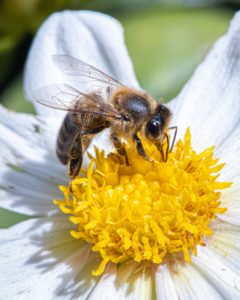 A few advantages of mason bees in the Edmonds area:
A few advantages of mason bees in the Edmonds area:
- Mason bees are very local to pollinating your yard -- within 300 ft of the nest.
- Triple yields, especially apples, cherries, plums, nuts and berries.
- Mason bees are super easy to raise and can be as simple as putting out a mason bee house.
- They are perfect for our Edmonds weather, active at cooler temperatures than other pollinators.
- Early spring pollinators ideal for early spring flowers on fruit trees and berry shrubs.
- Inexpensive to get started with very little equipment required.
- Support the stressed insect pollinator population with healthy pollinators back into the population.
- They are very productive, visiting over 2,000 flowers a day
- Efficiency- Pollinate over 95% of flowers they land on vs honey bees 5%.
- Each mason bee pollinates around 100 times more than the average honey bee.
- Mason bee houses also provide habitat to other native solitary bees.
- Mason bees are gentle and, rarely, rarley ever sting (unless in SERIOUS danger).
More Information on Mason Bees
Mason Bees supplement and co-exist with honey bees but offer many advantages over honey bees (except for honey!)
Mason bees are far more efficient at pollinating because pollen collects on their body and when they belly flop onto flowers they pollinate with over a 95% effectiveness. Conversely, honey bees pollinate roughly 5% of the 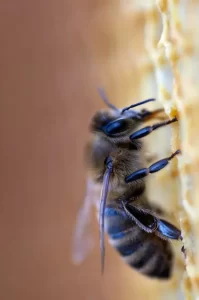 flowers due to the way they groom their bodies and store the pollen on their back legs. Honey bees have barbs on their second set of legs that they comb the pollen off their body and compact with saliva into “pollen baskets” on their hind legs. Honey bees can fly for miles and mason bees are more local (300 ft) visiting a hundred times more flowers (2000) a day. Mason bees are also smaller and able to get into the small bell-shaped blueberry flowers. This all translates into concentrated pollination in your backyard with higher crop yields.
flowers due to the way they groom their bodies and store the pollen on their back legs. Honey bees have barbs on their second set of legs that they comb the pollen off their body and compact with saliva into “pollen baskets” on their hind legs. Honey bees can fly for miles and mason bees are more local (300 ft) visiting a hundred times more flowers (2000) a day. Mason bees are also smaller and able to get into the small bell-shaped blueberry flowers. This all translates into concentrated pollination in your backyard with higher crop yields.
Mason bees are most active in early spring, in time to pollinate the early spring flowers on fruit trees and berry shrubs. Most other pollinators are not active until the warmer summer months when the fruit tree blossoms have faded. Want a better cherry crop? Host some gentle mason bees.
Solitary bees with no hive or queen to protect such as the mason bees are more gentle and rarely sting unless squeezed or pressed on. The males have no stingers and the females, if they should ever do so, have a very mild, barbless sting similar to a mosquito bite.
Life Cycle of Mason Bees:
The life of a mason bee is relatively short-lived and with one generation of offspring per year laying 15-20 eggs compared to a queen honey bee that lays 500- 2,000 a DAY. The female mason bee controls the gender of the bees as she lays them. Eggs laid in over 3 inches from the entrance of the hole are fertilized eggs and become female. Within the first 3 inches of the hole unfertilized eggs are laid and become male. Typically more male eggs are laid than female and should the nest be attacked by pests such as woodpeckers, the females at the back are more protected.
When the temperature exceeds 50-55 degrees, the male bees will emerge first and then the females exit 2-5 days later. After mating with the male 3-5
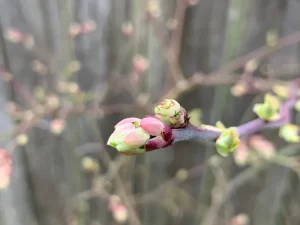 days later, the female immediately starts foraging and building her nest. As solitary bees, female bees are their own queen and work by themselves, find their own food, build their own nest, lay eggs and die within 10 weeks. Male bees are active pollinating for about 2 weeks and females 4-6 weeks.
days later, the female immediately starts foraging and building her nest. As solitary bees, female bees are their own queen and work by themselves, find their own food, build their own nest, lay eggs and die within 10 weeks. Male bees are active pollinating for about 2 weeks and females 4-6 weeks.
Bees are exothermic and the morning sun allows them to warm up for earlier foraging without expending additional energy. By vigorously vibrating their flight muscles , their body temperature reaches the required 90 degrees for them to be active and pollinating.
Mason bees eat nectar and pollen as they forage, gathering each to take back to the nest to be mixed together to form a ball where a single egg is laid on it. The pollen sticks to their body hair which acts as velcro and the reason they are such effective pollinators is that they are messy foragers. They land willy-nilly on a flower spreading pollen everywhere with an effective pollination rate of 95% vs honey bees 5% pollination rate.
After each pollen/nectar ball, the female mason bee then creates a mud wall and continues until there are 5-6 chambers per hole with a thicker wall built at the entrance.
Within a few days, a larvae appears from the egg and starts to feed on the pollen. Around 10 days later they start to spin a cocoon whereby the pupa transforms into an adult bee in the fall. The adult bee remains in the cocoon in a winter dormant state until the following spring when the life cycle repeats itself.
If this blog has piqued your interest and you want to help the pollination crisis then now is the time to get involved from early March to April. Most local garden centers have all the stuff you need to get started including live bees. For a modest investment (under $100) you too can be a part of the solution!
Are You Ready To Get Started?!
What you will need:
- A mason bee nesting house- get at your local nursery.
- The house can have reeds, cardboard straws or laminated wood blocks.
- Source of water.
- Mason bees (either build it and they will come or get some cocoons at local nursery).
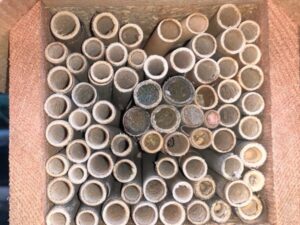 A shovel-sized mud puddle with steep sides and clayey mud.
A shovel-sized mud puddle with steep sides and clayey mud.
Selecting a house:
- There are a wide variety of mason bee houses available both online and at local nurseries.
- Try to use wood and avoid plastic due to mold issues.
- Make sure the length of the channel for the reeds or holes is six inches or more.
- Do not use plastic straws or bamboo.
- Wood blocks, that have channels in them and stacked to make tunnels, can be taken apart in the Fall -- cleaned, and then reused.
- The location needs to be close to spring flowers with continuous blooms from March to May/ Mid-June and no more than 200-300 ft away.
- The best tunnel hole size is 5/16” for mason bees.
- Using reeds with different sizes can also encourage other types of bees such as leafcutter bees that require ¼” holes.
- Reed style mason bee house
- Block bee house w/attic
- Another block bee house
- Combined block/reed
Setting up the house:
- The house is optimally placed facing South to South East so that the bees warm up with the morning sun and start foraging earlier. Keep protected from the hot afternoon sun.
- House needs to be secured against a solid surface to its back. The bees do not like a swinging house.
- Install the house at eye level (5-7 feet) for viewing enjoyment and to keep away from predators.
- To protect against the weather, place the bee house under an eave of a garage, shed or home some bee houses have a 2-3 inch overhang which works as well. If possible, install the house leaning slightly forward to drain water that may collect in the house.
- Cocoons. Smaller are male
- Cocoon chamber
- Inserting cocoon chamber
- Attic w/ the cocoon chamber
If you purchase cocoons:
- Cocoons can be kept in the refrigerator until ready to be placed out (no later than May 1).
- When the temperatures get above 50 degrees for multiple days, the bees will start to emerge. A great indicator is when the blooms start to look like popcorn and ready to bloom.
- Cocoons can be placed out in a tiered fashion in two waves (i.e. 10 at a time and 2 weeks apart) to extend the pollination period.
- If placing out in two waves, make sure there are more small (male) cocoons placed out than large (female) so that there are enough males to mate with the females.
- Place the cocoon box with the lid open inside the nest towards the back. A good system is the style of mason bee house that has an attic and an insert that can be placed inside it with a 5/16” exit hole. This provides the best protection from predators (see above photos).
- If the cocoons are left after the bees have exited, they become an attractant to encourage nesting by other native solitary bees.
- Female Bees Emerging
- Male Bee Emerging
- Female Bee Entering Cocoon Attic
Moist clay soil:
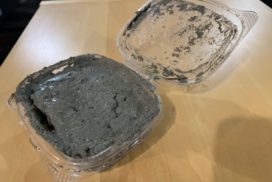 Mason bees derive their name because they build their nests from clay. This important component must be near their nest as they are unable to
Mason bees derive their name because they build their nests from clay. This important component must be near their nest as they are unable to
carry particles larger than clay in their mandibles.
Take some moist soil near the nest and pinch it in your fingers. If it feels like clay and sticks together then dig a small hole with vertical walls and leave a pile next to the hole. Keep the hole itself moist and moisten only one side of the pile. The bees will choose the perfect moisture. If the soil near the nest is too sandy, set a container of clay nearby and keep it wet. Clay or clay mix can also be purchased online for mason bees.
 Tubes, reeds or blocks?
Tubes, reeds or blocks?
You will need to choose for your bee house tubes or nesting trays. While some people use solid wooden houses with drilled holes for nesting, this type of habitat does not allow cocoons to be harvested and there tends to be significant buildup of debris and disease in the holes after being used for multiple seasons. It is recommended to select nesting tubes or blocks that can be opened, and harvesting, cleaning, and storing your cocoons at the end of the season to ensure bee health and populations for the next year. Some options for tubes to use include natural reeds, cardboard tubes with or without a paper insert, or any rigid and breathable material like printer paper rolled around a pencil and fastened with tape. If you want to lure and
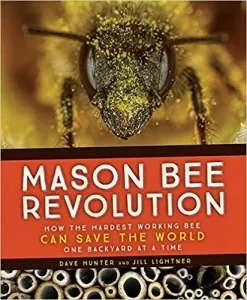
Recommended Book
promote other native pollinators providing tubes with a range of diameters is a good way to promote habitat for the widest range of native bee and beneficial wasp species. Once cocoons are harvested, however, those tubes will need to be replaced. The blocks have trays with grooves that stack to form tunnels. At the end of the year, the blocks and be taken apart, cleaned and then reused.
We would like to hear from you in the comments below! Do you have Mason Bees? Plan to get some? We would especially like to hear from you if this blog has inspired you to get Mason Bees!
Other Upcoming Blogs (stay tuned)
Pests, Storing Nest and Harvesting Cocoons
Summer Leafcutter Bees
Did you find this blog helfpul? Contribute to the beautification of Edmonds!
Check out this great short video from NPR on Mason Bees


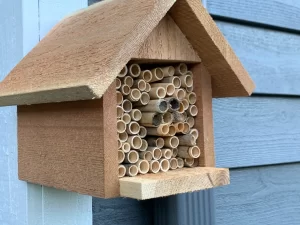
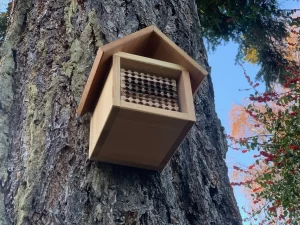
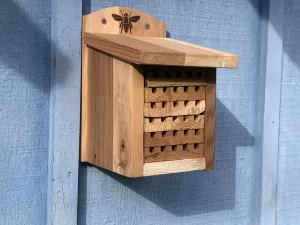
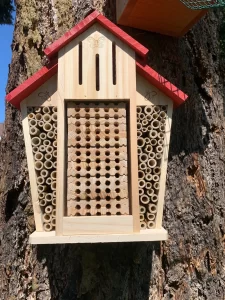
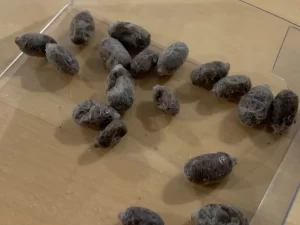
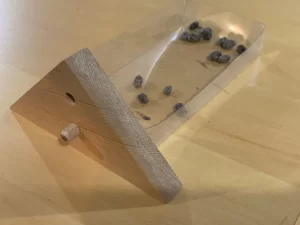
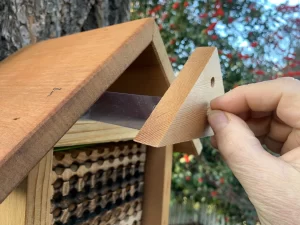
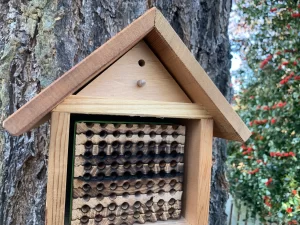
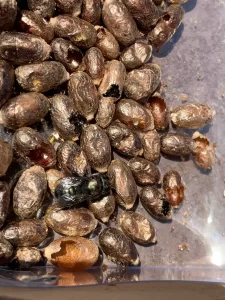
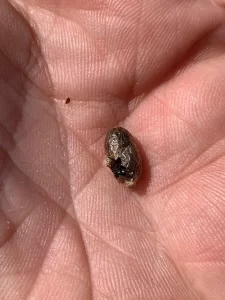
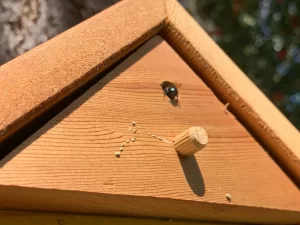
When I was a teen, I had four honeybee hives. In the above article, I repeated a couple of times just how more effective the mason bees are over the honeybees at pollinating your local garden. As I began learning about mason bees prior to bringing them to my yard, that was a big point for me based on my prior knowledge of honey bees. Especially for the suburban garden where you want the biggest impact on your own area, mason bees are an easy, ideal addition.